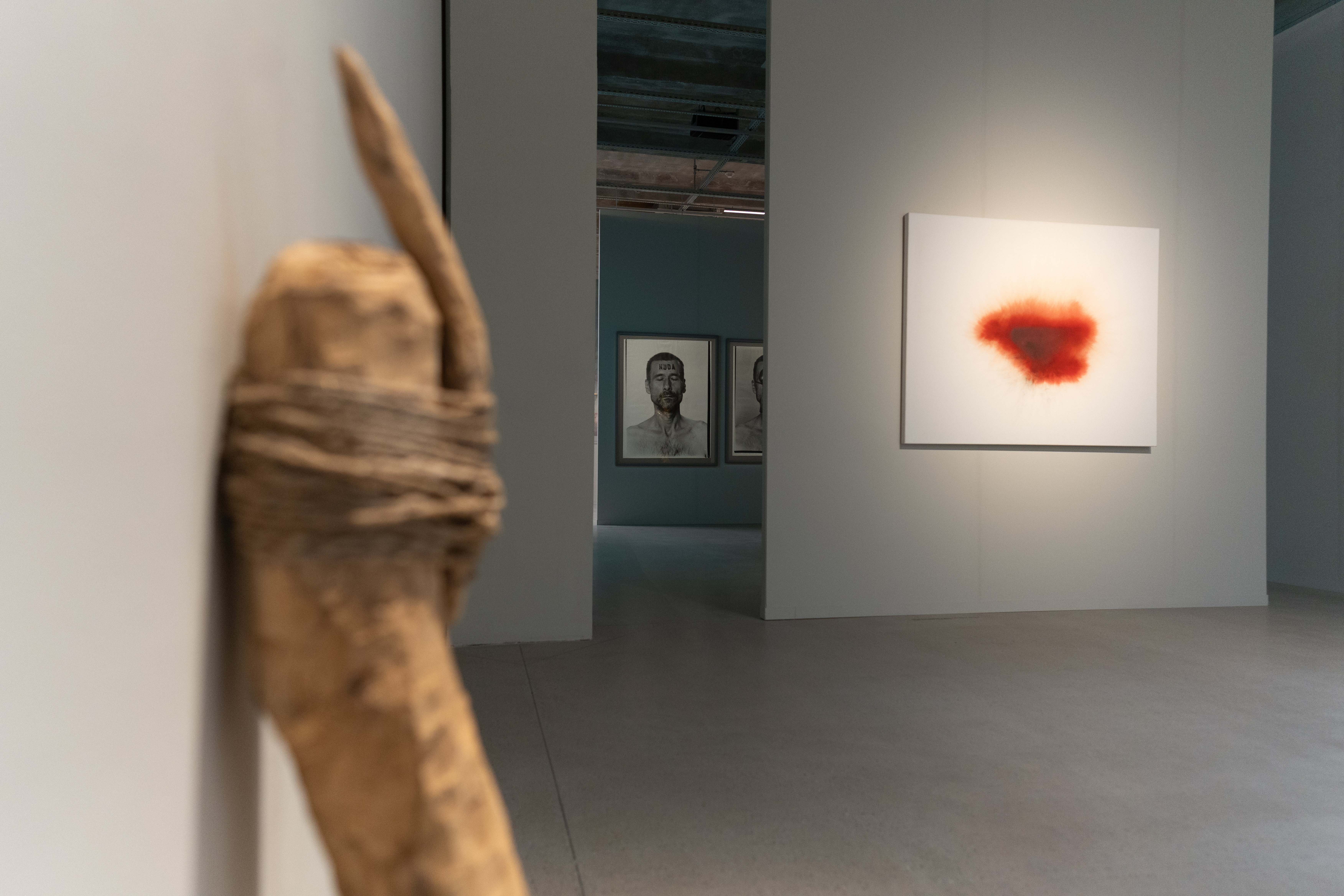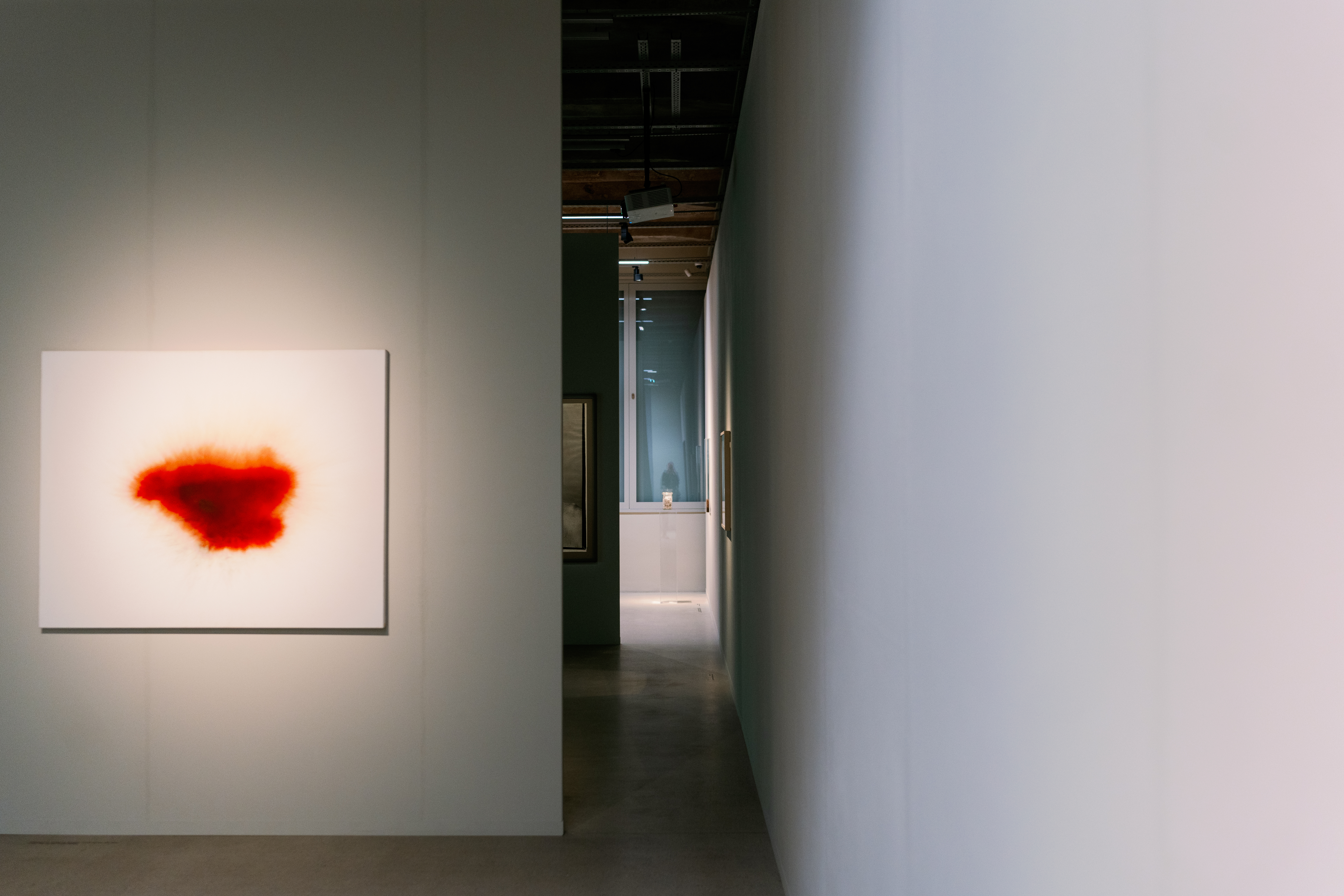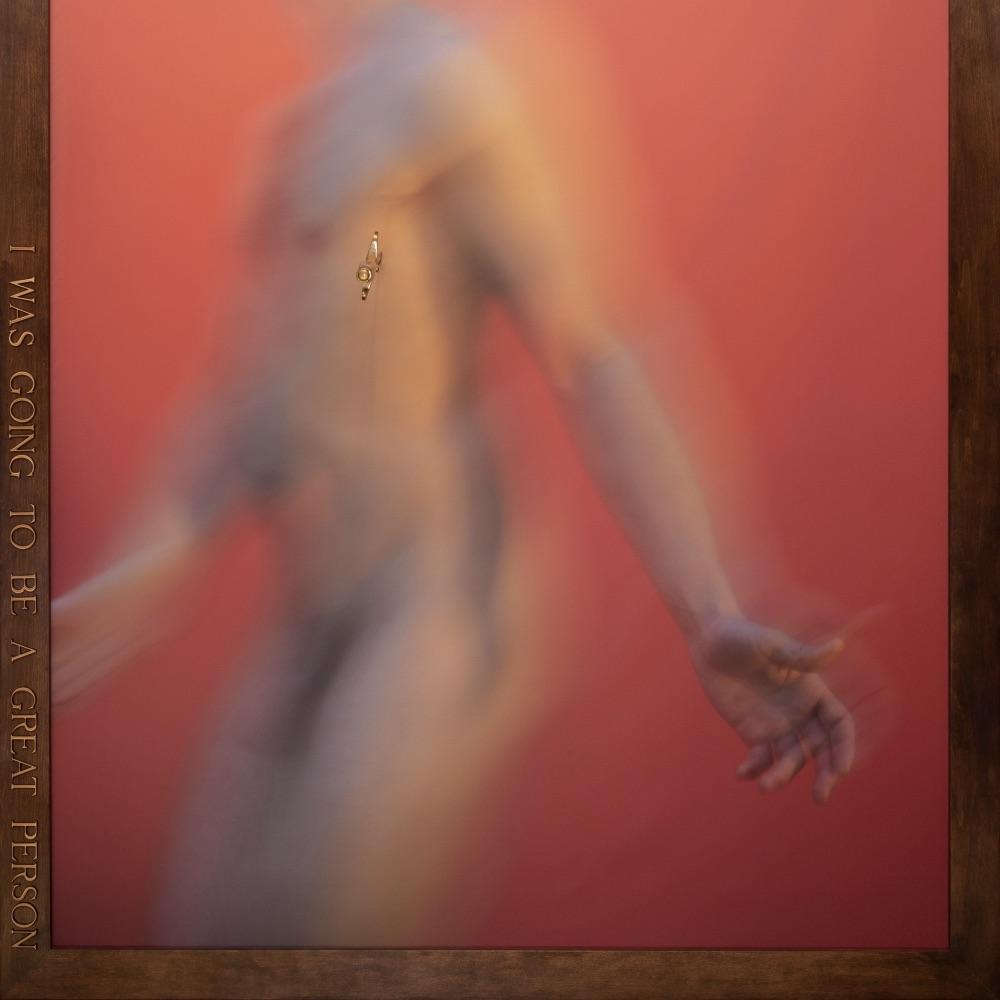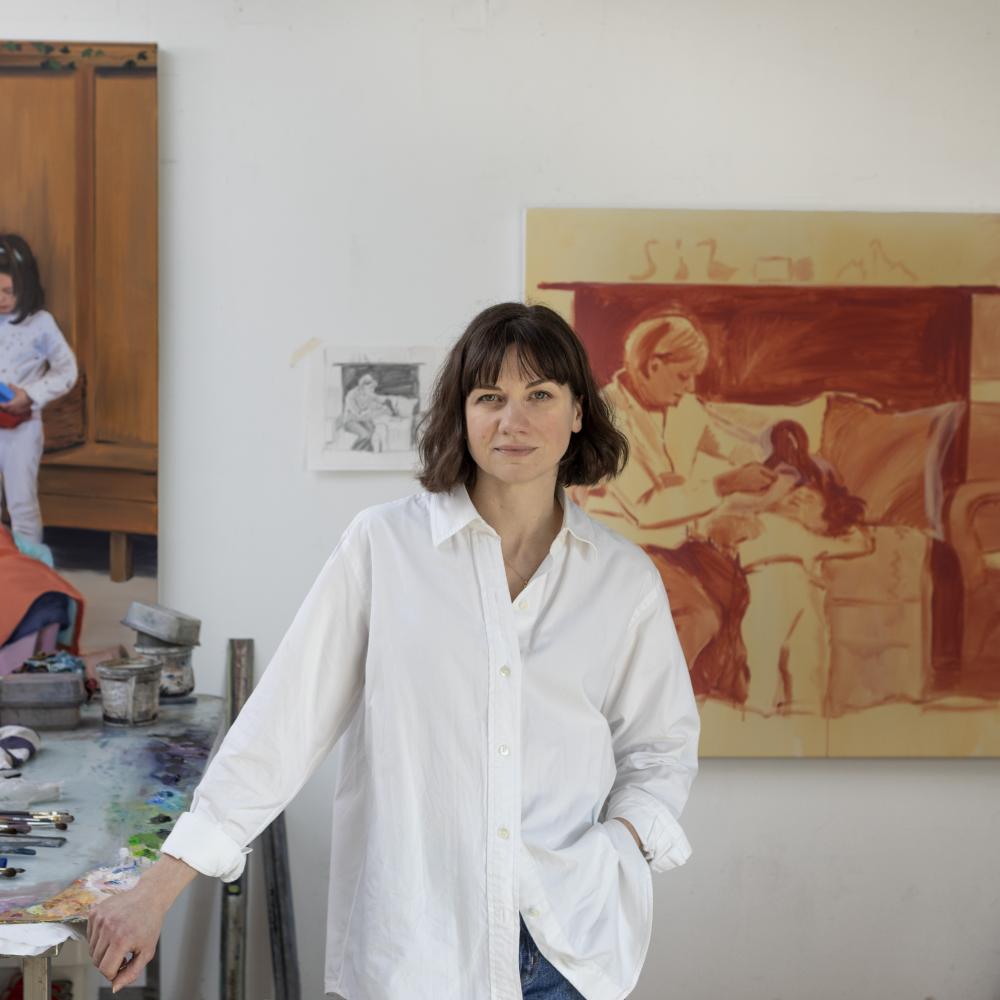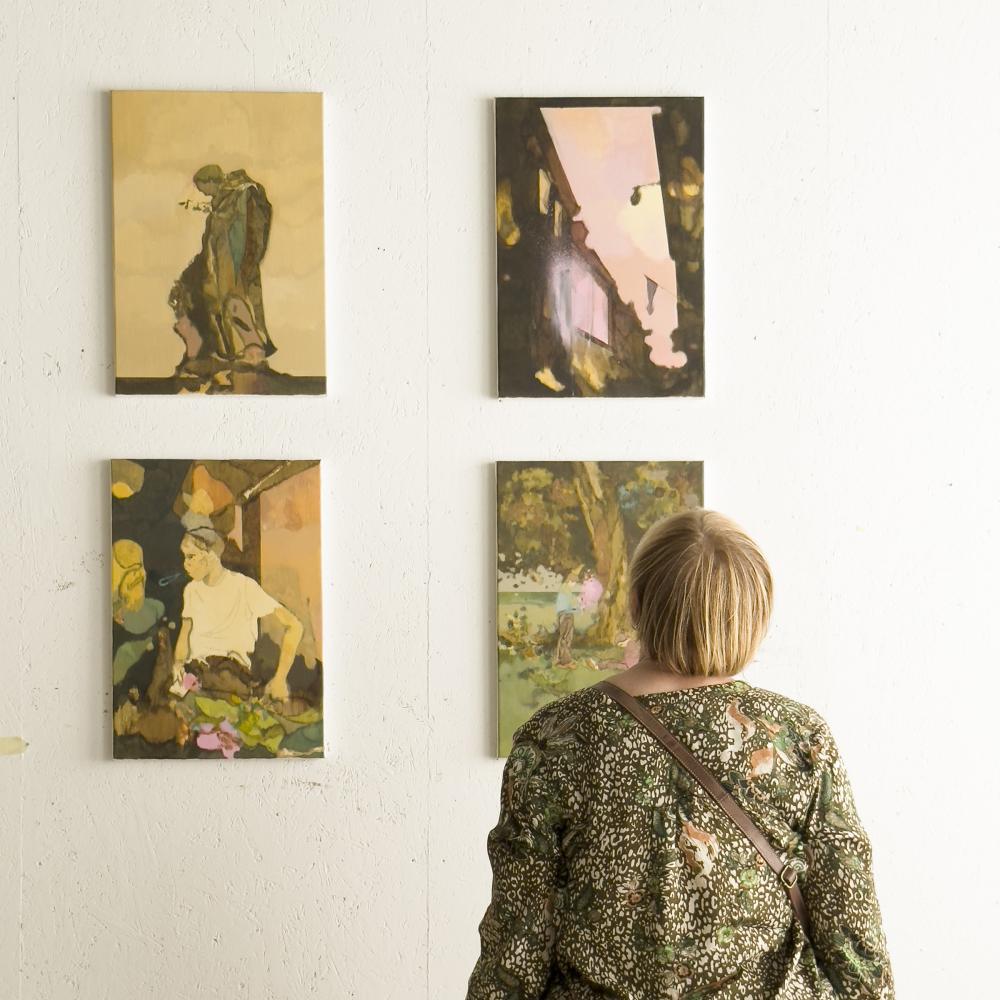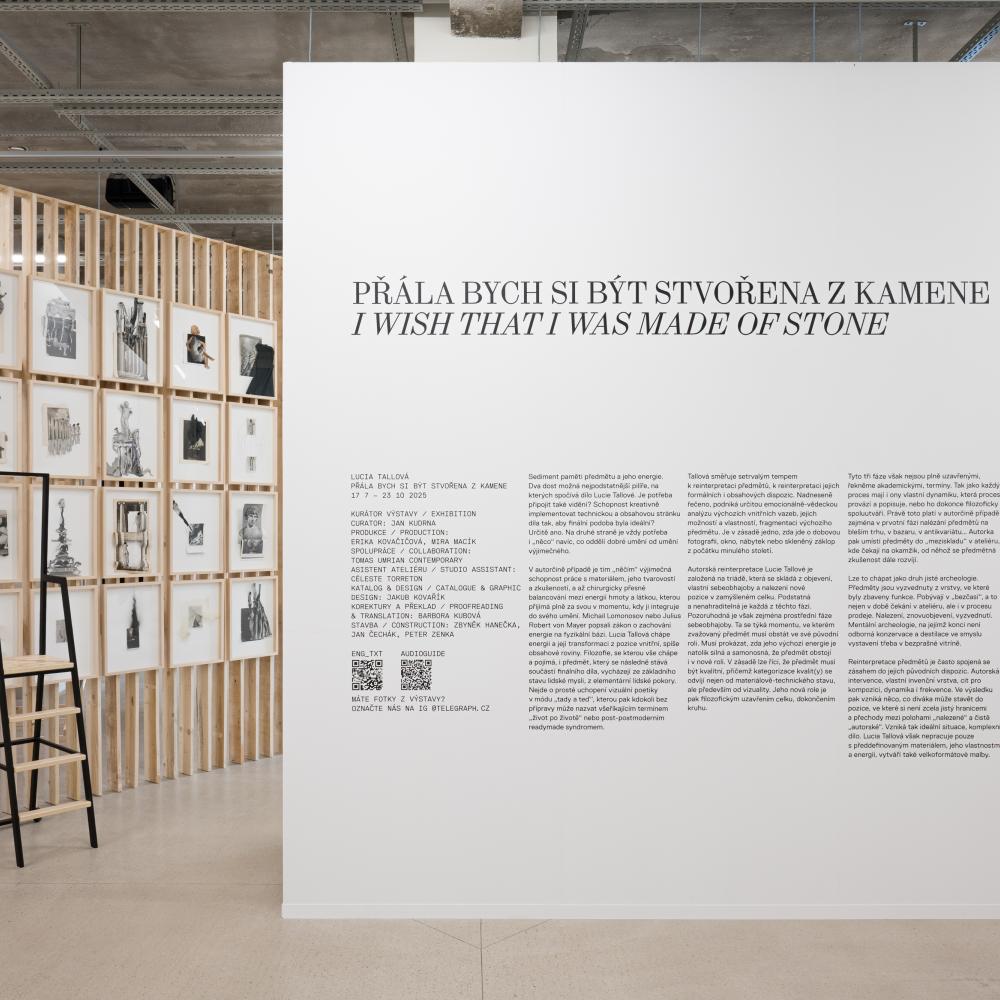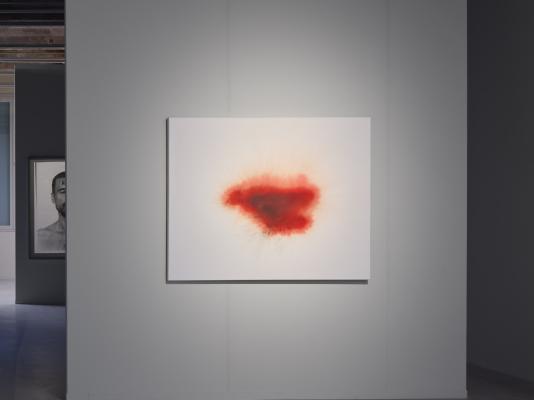
The exhibition The Eighties: Signal IV, on view at the Telegraph Gallery until March 20, charts the artistic manifestations of the 1980s. At the time, the most important artistic endeavours were taking place outside the official scene. The visual language of selected artists responded to social pressures and global impulses, and new approaches to the medium of image, object and performance were taking shape. Through articles on specific works and artists, we also want to bring the atmosphere and cultural context of this time into focus.
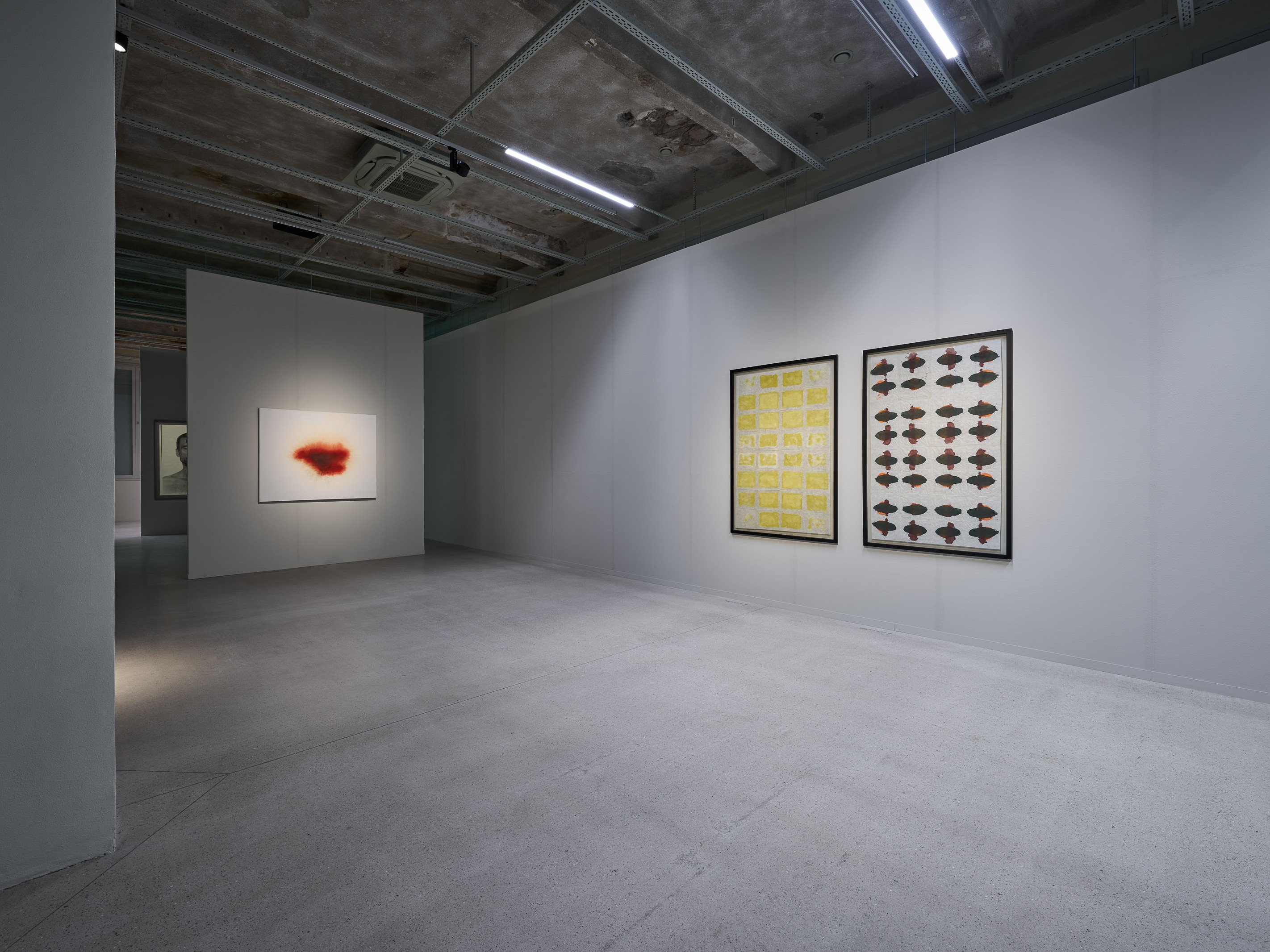
Magdalena Jetelová (*1946) is one of the most important personalities of Czech and international art. Her work oscillates between sculpture, land art and conceptual interventions in landscape and architecture. In her works she thematizes the relationship between space and time, physical and mental boundaries that shape our reality. After studying at the Academy of Fine Arts in Prague in the 1970s, her artistic activity came into conflict with the then normalization regime, which eventually led to her emigration to Germany in 1985. She received prestigious awards abroad and worked as a professor at renowned academies in Düsseldorf and Munich. Since the 1990s, she has used modern technologies, especially laser projection and satellite imaging, to redefine space and make the invisible visible. In the Czech context, one of her best known works is the monumental wooden Crawling Chair in Prague's Kampa. It was destroyed after the floods in 2002. Jetelová decided to design a new chair, this time made of thick metal on a solid base, located in Ostrava-Vítkovice.
In her projects she works with the phenomena of power, history and the perceptual perception of space. Her iconic interventions, such as Domestication of the Pyramids, reflect on the ways in which architecture and landscape influence our collective memory. Magdalena Jetelová's work stands out for its monumentality, but at the same time retains a conceptual lightness - she works with physical and ephemeral materials, laser, smoke, text and architecture itself.
The work in the Silent Sarka series, which is part of the exhibition at Telegraph Gallery, was created in the 1980s and draws on her early land art projects and performances. The pyrotechnic drawing on canvas captures a moment of destruction and transformation. With its red colouring and diffuse structure, the work refers to the artist's earlier performance in the natural environment of Šarka, where she used red smoke bombs to thematise the political situation of the then Czechoslovakia. The abstract imprint of the explosion resembles a record of an energy blast, a trace of action that becomes an image. This displacement of the performative act into a two-dimensional form is a key element of Jetelová's work - the physical action is transformed into a permanent testimony, a document of memory.
The ambiguity of the work invites different interpretations: it can evoke a landscape detail, a satellite view of a disturbed earth, or a biological structure under a microscope. All these layers refer to the deeper principles of the artist's work - the connection between the personal and the political, the microscopic and the macroscopic, the ephemeral and the monumental. Tichá Šárka is thus not only a memory of a specific event, but also a visual metaphor for the process of transformation and change that is central to Magdalena Jetelová's work.
